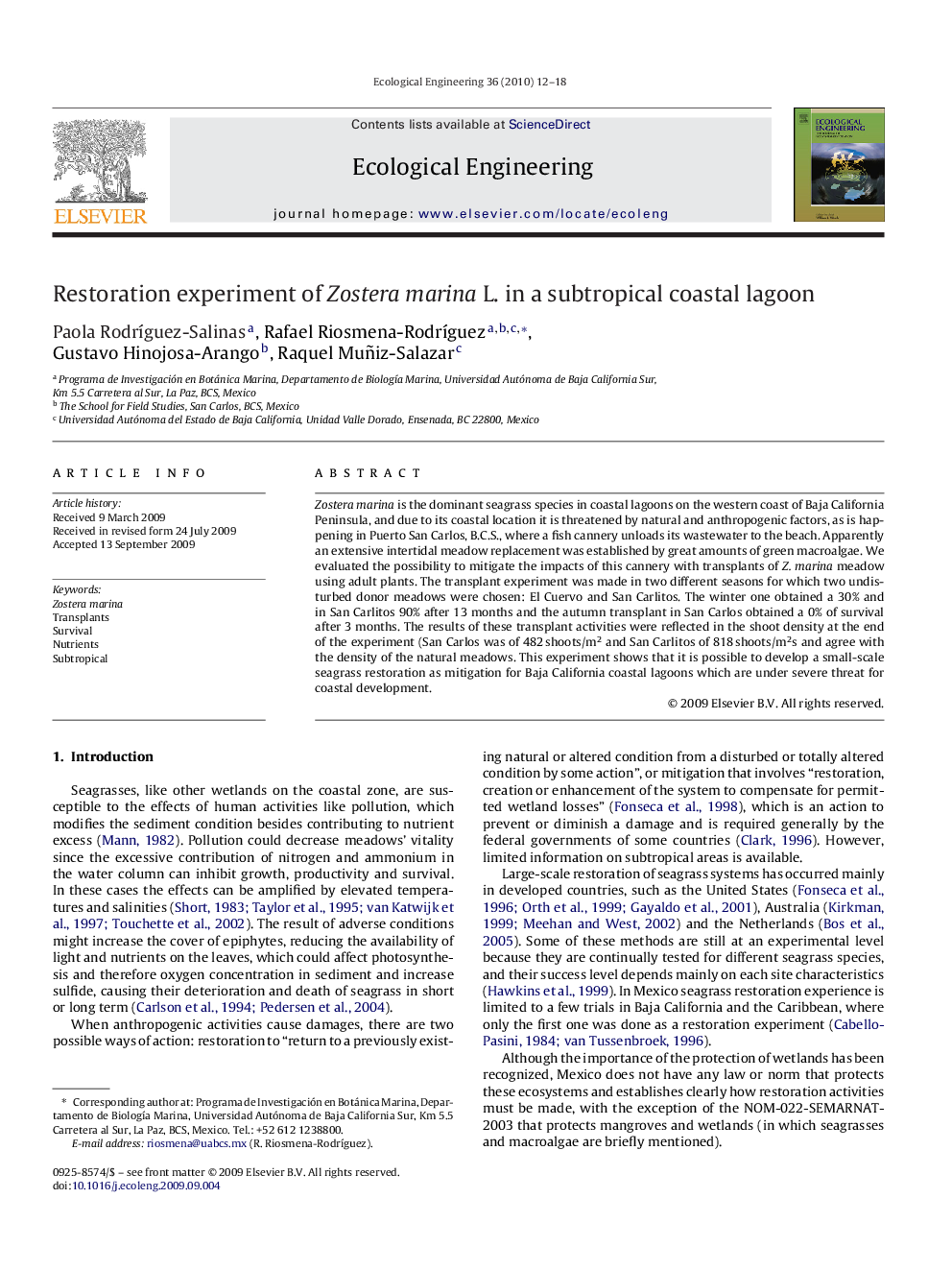| Article ID | Journal | Published Year | Pages | File Type |
|---|---|---|---|---|
| 4390815 | Ecological Engineering | 2010 | 7 Pages |
Zostera marina is the dominant seagrass species in coastal lagoons on the western coast of Baja California Peninsula, and due to its coastal location it is threatened by natural and anthropogenic factors, as is happening in Puerto San Carlos, B.C.S., where a fish cannery unloads its wastewater to the beach. Apparently an extensive intertidal meadow replacement was established by great amounts of green macroalgae. We evaluated the possibility to mitigate the impacts of this cannery with transplants of Z. marina meadow using adult plants. The transplant experiment was made in two different seasons for which two undisturbed donor meadows were chosen: El Cuervo and San Carlitos. The winter one obtained a 30% and in San Carlitos 90% after 13 months and the autumn transplant in San Carlos obtained a 0% of survival after 3 months. The results of these transplant activities were reflected in the shoot density at the end of the experiment (San Carlos was of 482 shoots/m2 and San Carlitos of 818 shoots/m2s and agree with the density of the natural meadows. This experiment shows that it is possible to develop a small-scale seagrass restoration as mitigation for Baja California coastal lagoons which are under severe threat for coastal development.
